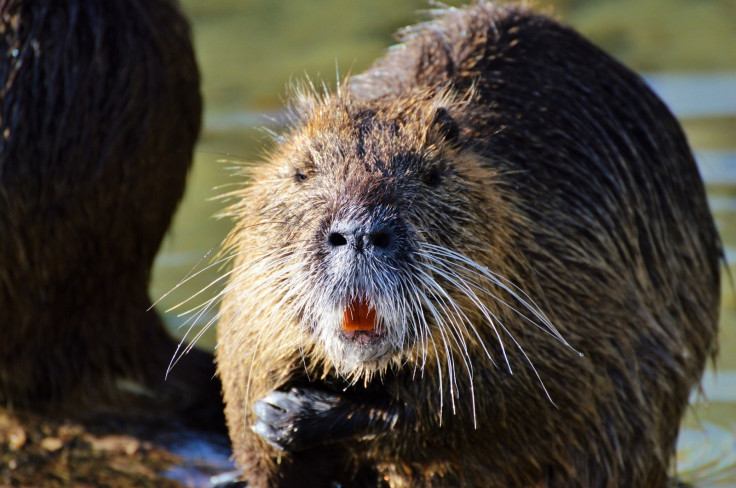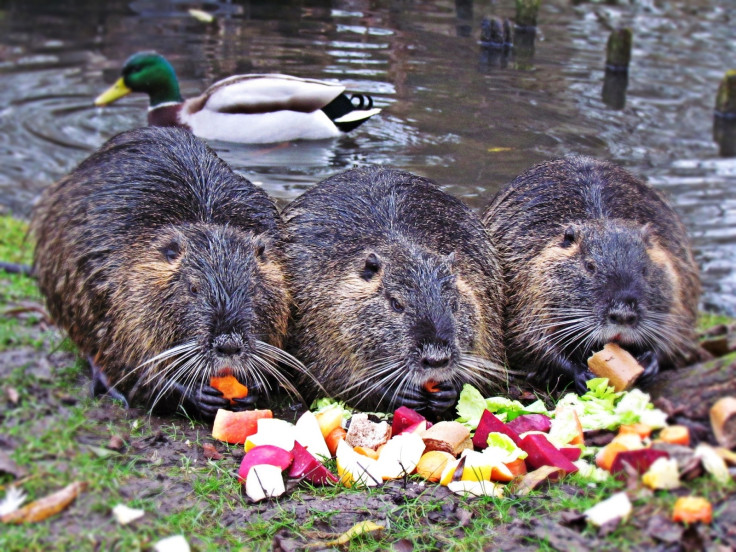Giant rodents with orange teeth are invading California
Nutrias resemble huge rats and they carry many diseases.

It sounds like the plot from a B movie, but it's real; huge rodents weighing up to 9kg (20 pounds) and reaching up to 1m in length are invading California.
The animals come with bright orange teeth, webbed feet and rat-like tails. They are nutrias, a species also known as coypu, which is originated from South America. Because it was also domesticated, the breed spread around the world and specimens have also been spotted in Canada and Europe.
Nutria look like the beavers' rough cousin, but they are herbivores and not predators. However, they can be aggressive in certain situations. But it's the diseases they carry that makes them a threat.
They can pass on rabies, Triple E, salmonellosis, Weil's disease or toxoplasmosis to humans. They also host a multitude of parasites, like louses, fleas and ticks.
In the past year, 20 specimens were spotted in three different California counties, including a healthy female one. Now, that's a problem because nutrias are famous for their ability to procreate very quickly. Female nutrias can carry three litters a year, and one litter can consist of about twelve baby nutrias each.
On top of this high reproduction rate, nutrias can live as long as 10 years. According to the US Fish & Wildlife Service, a single breeding pair of nutrias could produce up to 16,000 offspring in only three years.
These rodents are voracious and would eat any vegetation they encounter. In their natural habitat, the nutrias would be concerned about predators such as bald eagles, hawks or alligators, but none of those species are present in California, leaving humans to deal with the pest.
The state thought it had successfully eradicated nutrias back in 1965, however, the rodents have reappeared.
The California Department of Fish and Wildlife (CDFW) is concerned about nutrias spotting and has set up a hotline to track down the rodents. According to CDFW, nutrias could seriously damage the state's resources, "causing the loss of wetlands, severe soil erosion, damage to agricultural crops and levees and reduced stability of banks, dikes and roadbeds."
"We have no idea how many there are or how they were reintroduced," CDFW spokesman Peter Tira told NPR. "But we do know we have to get rid of them."

Louisiana suffered consequent damage after it was invaded by nutrias in the 1980s. "We've given up on complete eradication," Jennifer Manuel, a biologist supervisor with the Louisiana Department of Wildlife and Fisheries (LDWF), told NPR.
Manuel said her agency is just hoping to keep the nutrias numbers down at this point.
In Louisiana, people with a hunting license can kill up to 5 nutrias a day and even sell their catch, something the LDWF encourages. "Our position is that it's something that people can legally hunt and trap out in the marsh," Manuel said.
Even though they look like big rats, nutrias are edible, and people should try to eat them if they can, Manuel said.
"[Nutria] has a stigma of being like a rat, but it's not closely related to a rat. It's more like rabbit or squirrel in terms of meat," she said.
However, California is taking another position on the matter, and said that as nutrias are classified as an invasive species in the state, it is illegal for people to own, transport or eat them.







